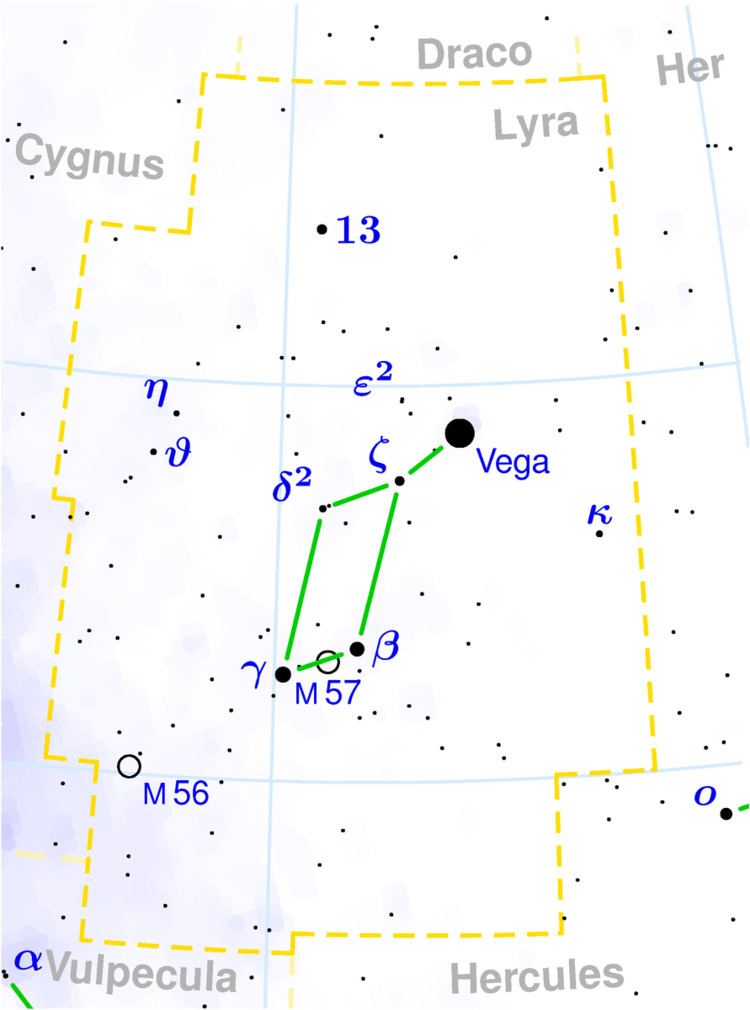 | ||
Epsilon Lyrae (ε Lyr, ε Lyrae), also known as the Double Double, is a multiple star system approximately 162 light-years away in the constellation of Lyra.
Star System
The widest two components of the system are easily separated when viewed through binoculars, or even with the naked eye under excellent conditions. The northern component is called ε1 and the southern one is called ε2; they both lie around 162 light years from Earth and orbit each other. When viewed at higher magnifications, both stars of the binary can be further split into binaries; that is, the system contains two sets of binary stars orbiting each other. Being able to view the components of each is a common benchmark for the resolving power of telescopes, since the individual doubles are so close together: the stars of ε1 were 2.35 arc-seconds apart in 2006, those of ε2 were separated by about the same amount in that year. Since the first high-precision measurements of their orbit in the 1980s, both binaries have moved only a few degrees in position angle.
The component stars of ε1 have magnitudes of 4.7 and 6.2 separated by 2.6" and have an orbital period that can only be crudely estimated at 1200 years, which places them at roughly 140 AU apart. The component stars of ε2 have magnitudes 5.1 and 5.5 separated by 2.3", and orbit in perhaps half that period. ε1 and ε2 themselves are not closer than 0.16 light years apart, and would take hundreds of thousands of years to complete an orbit. An observer at one pair would see the other pair shining with the light of a quarter Moon (which is about mv = −5.0), less than a degree away from each other.
A fifth component of this system, orbiting one of the ε2 pair, was detected by speckle interferometry in 1985 and confirmed in two subsequent observations. No orbit can be prepared from such limited data, but its rapid motion suggests a period of a few tens of years. Its maximum observed separation of 0.2 arc-seconds precludes direct visual observation.
A number of other nearby stars may also be part of the system, bringing the system to a total of ten stars. The arrangement of the system is summarised in the tables below.
